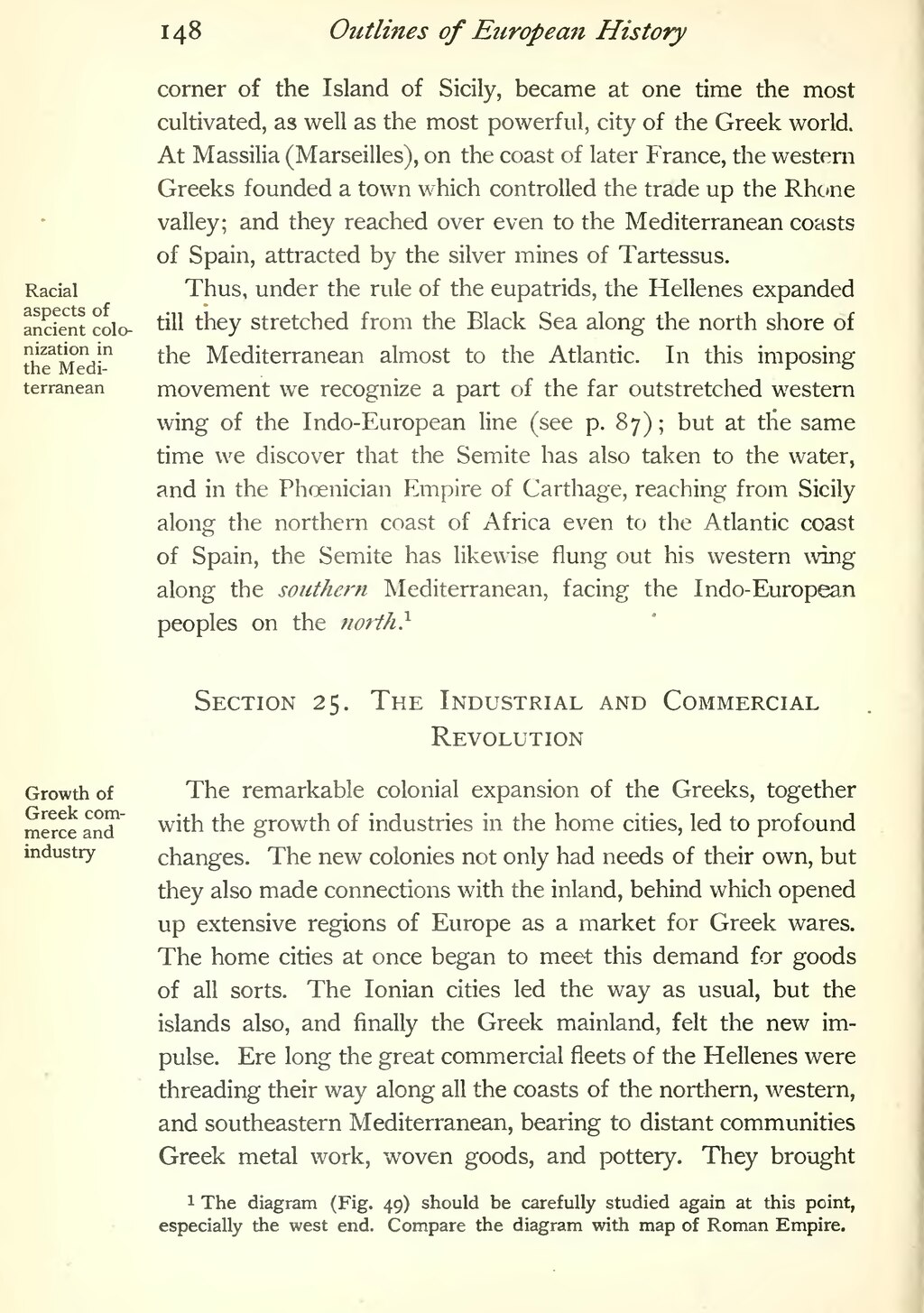148 Outlines of European History Racial aspects of ancient colo- nization in the Medi- terranean corner of the Island of Sicily, became at one time the most cultivated, as well as the most powerful, city of the Greek world. At Massilia (Marseilles), on the coast of later France, the western Greeks founded a town which controlled the trade up the Rhone valley; and they reached over even to the Mediterranean coasts of Spain, attracted by the silver mines of Tartessus. Thus, under the rule of the eupatrids, the Hellenes expanded till they stretched from the Black Sea along the north shore of the Mediterranean almost to the Atlantic. In this imposing movement we recognize a part of the far outstretched western wing of the Indo-European line (see p. 87); but at the same time we discover that the Semite has also taken to the water, and in the Phoenician Empire of Carthage, reaching from Sicily along the northern coast of Africa even to the Atlantic coast of Spain, the Semite has likewise flung out his western wing along the southern Mediterranean, facing the Indo-European peoples on the ?iort}i} Section 25. The Industrial and Commercial Revolution Growth of Greek com- merce and industry The remarkable colonial expansion of the Greeks, together with the growth of industries in the home cities, led to profound changes. The new colonies not only had needs of their own, but they also made connections with the inland, behind which opened up extensive regions of Europe as a market for Greek wares. The home cities at once began to meet this demand for goods of all sorts. The Ionian cities led the way as usual, but the islands also, and finally the Greek mainland, felt the new im- pulse. Ere long the great commercial fleets of the Hellenes were threading their way along all the coasts of the northern, western, and southeastern Mediterranean, bearing to distant communities Greek metal work, woven goods, and pottery. They brought 1 The diagram (Fig. 49) should be carefully studied again at this point, especially the west end. Compare the diagram with map of Roman Empire.
